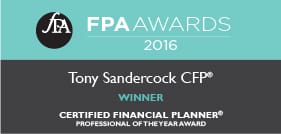|
Who does not want to be confident and relaxed about their financial future? To be that way, most of you recognise that you need to be in control, and on top of your money. After all, the future is coming whether you plan for it or not. Will you have the retirement you want, or what happens to you by default? About the most effective thing you can do to get ahead is so basic, I am almost embarrassed to say it – spend less than you earn and do something sensible with the difference. The problem is, so few people do this successfully. Creating and sticking to a budget is not easy. Now, we know that the mere thought of budgeting is enough to make you wince!! That is why we are going to cover three approaches here today, because we have learnt over the last 30 plus years that there is not one, perfect solution that suits everyone. I know that one of these will work for you. Please stick with this, because once you are in control, you can begin to plan and invest with confidence, meaning you’ll do better with your money, stress less about retirement, and live a better life too. Let’s get started. The Traditional BudgetThe traditional budget tracks every dollar, every month. I promise you, when you are this intentional with your money, you cannot help but make progress. If you can pull it off, hands down it is the best way of making the most of what you have. Taking control of your money starts here! Step 1: Write down your monthly income. You can do this the old-fashioned way with a sheet of paper, create your own Excel spreadsheet, or you can use our free budgeting tool that you can download here. Your monthly income is your total take-home pay (after tax) for both you and, if you are married, your spouse. Do not forget to include everything—full-time jobs, second jobs, Centrelink payments, and any other ongoing source of income. Step 2: List Your Expenses Write down every expense. Think about your regular bills (mortgage, car payments, etc.), your not so regular bills (quarterly payments like electricity or annual payments like car insurance) and your seasonal bills (Christmas, holidays etc.). After that, add up your other costs, like groceries, petrol, subscriptions, entertainment, and clothing. Every dollar you spend for the month should be accounted for. Step 3: Subtract Your Expenses From Income We want this number to be zero. That means bringing one of the numbers up, or others down, or both. When you do that, you know every dollar you make has a place in your budget. Every dollar must have a home! If you fill out every line in your budget and come out $1,000 ahead (meaning you have nothing for that $1,000 to do), you have not finished your budget yet! You must give that remaining $1,000 to something. Whatever line item you plug in here is totally up to you. If you are still in debt, that would be a good place for extra cash. Saving up for a big expense? Add it to your savings account. But know this: If you do not give that money a name, it will be spent somewhere, maybe wasted, and you will end up wondering where that extra $1,000 went. Step 4. Track your spending throughout the month. All that is left now is for you to track your expenses throughout the month. It is the only way you will know if your spending lines up with your plan. A phone app is an easy way to track your spending at the time you spend. Or you can look at your statements and receipts each month or write them down as you go. Your bank might even provide a spending tool as part of your internet banking. Mine does (NAB), and it is truly excellent. Because it is automated, most of the hard work is already done for me. With a couple of minutes of effort each month, I can see exactly where our money has gone. Whichever way you to do it, you need to analyse your spending, eliminate waste, look for where savings can be made, give those savings a new home, and recompute for the next month. A bit of work? Yes. Effective? Absolutely. The Anti BudgetHow often have I heard that the traditional budget does not work? Let us be honest, they can be difficult and time consuming to manage. Some discipline is required too (hmmm). For many people, for all sorts of reasons, budgets have not and will not work. So, what do you do? Well, you can stop flogging a dead horse and try something different. Consider the anti-budget. The anti-budget has only two categories: spending and saving. Here is how it works. At the top of the budget, list your weekly, fortnightly, or monthly income, after tax. Next, decide how much you want to save. In this context, “save” is a broad term that includes paying off your debts (beyond the minimum balance requirement), making extra superannuation contributions or building up your emergency fund. Under the anti-budget, your “savings” are defined as anything that improves your net worth. Once you decide your target savings goals, transfer this money as soon as you receive it. For example, let’s say you bring home $3,000 per fortnight and you would like to pay an extra $500 per fortnight off your mortgage. Set up an automatic transfer for this money, to takes place as soon as you receive your pay. The money that is remaining after your savings is how you will fund your life. How to Manage an Anti-Budget So, the money flow will look like this: INCOME minus SAVINGS minus FIXED EXPENSES = SPEND WHAT IS LEFT. To manage your spending, we suggest a separate account for all your fixed bills, such as your rent or mortgage, utilities, car payment, mobile and internet. Every pay run transfer this money into your ‘bills’ account and have those expenses automatically taken out when they are due. Once your fixed bills are covered, the remainder in your everyday bank account is yours to spend as you would like on food, clothes, health and beauty products, entertainment, and anything else. In the end, it does not matter how much you spend on towels or toothpaste if your savings goals and fixed expenses are met. As you are transitioning to the anti-budget, monitor your expenses closely to make sure you do not spend more than you have for nonessential purchases. It might be helpful to stick to an all-cash (or debit card) lifestyle for fluctuating or discretionary purchases (like groceries, petrol, toiletries, and going out), and avoid using credit cards at all costs. The appeal of the anti-budget is its sheer simplicity. Once you are set-up, it is like being on auto pilot. If you are feeling overwhelmed by detailed and complex budgets and poring through bank statements monthly, you may want to give the anti-budget a go. The 70-10-10-10 BudgetThis option is going to encourage you to BLOW YOUR MONEY! Well, at least a little bit of it. There is nothing that will drain your excitement, creativity, and enthusiasm for life than an attitude of all work and no play. It is important that you take some time (& money) for yourself. But how much should you be blowing on the good times? And how will that impact your longer-term goals like retirement and debt reduction. I want to introduce you to a rule of thumb that can help answer all these questions. It is called the 70-10-10-10 budget, and it will ensure that you keep your eye on the prize (a stress-free retirement) while not allowing yourself to get burned out, over leveraged and teetering on the edge of a nervous breakdown. This concept is not new, and I certainly did not invent it, but it is an extremely effective way of handling your money. So, how does it work? The 70-10-10-10 budget is built on the premise that a household should function on no more than 70% of its earnings. People who subscribe to this budgeting plan set aside 70% of their combined incomes for food, utilities, rent or mortgage, clothing, transport, and other necessities. So, when buying a house, you do not think about what is the most the bank will lend you, but what you can reasonably fit into that 70%. The next 10% of your budget goes toward Debt Reduction. You begin by paying down the highest interest debts first. Once those debts are paid you add the additional money to lower interest debts and pay those off faster. Note that if you have a home loan, the minimum payment is not included here, but is part of the 70%. The next 10% goes to Future Savings. This could be any specific goal like retirement savings, building a share portfolio, a house deposit or even saving to pay cash for your next car (which is a much smarter idea than borrowing for it!) You should have an emergency fund first (which ideally covers your living expenses for at least 3 months) And the final 10% - Blow It!! This is for you. Life is for living and you need to have some fun along the way. Just restrict it to 10%. Go out to a nice restaurant, take a weekend getaway to the beach, or get a full body massage. You deserve a reward for your hard work, and this will serve as a motivator to keep going in whatever it is that you do. Example If you and your spouse earn a combined income of $10,000 per month after tax, your 70-10-10-10 budget would look like this: $7,000 allotted for living expenses. $1,000 allotted for savings accounts or investments. $1,000 to additional debt repayment and the remaining $1,000 goes to you. Within the living expenses portion of your budget, you could create additional categories for the mortgage (or rent), utilities, food, transportation, and any other regular expenses you incur each month. The Blow It category too could be split into ‘now’ fun, like going out for dinner tonight and ‘later’ fun, like saving for that overseas holiday. Variations If you are saving feverishly for the deposit on your first home, you could use Blow It money for Future Savings instead. If you had no debt, that could go to the Future Savings pot as well. Some people also vary the plan's percentages. For example, you may decide to cut down on expenses and live off 60 percent of your monthly income instead of 70. In this case, you could be creating a larger nest egg for your future. Though it may not be the ideal plan for everyone, the 70-10-10-10 budget has proven to be a successful roadmap for spending. If you are trying to find a balance between the here & the now and future needs, this is your answer. Check your budget. Does your spending fall in line with the 70-10-10-10 budget? Does anyone have a variation on this? Let me know your thoughts. ConclusionA reasonable question at this stage may be “Well, Tony, which one do you use?” Tracie and I have been using the anti-budget for 25 years. You may find this hard to believe, but Tracie still balances the household budget with cash. She withdraws a set amount from the ATM weekly as she reckons it is the easiest way for her to work within her budget, and she can tell at a glance how she is going (and she says she also gets to hide a bit from me). All savings and fixed expenses are automated. You do not need to use cash, just have a separate account with debit card attached will ensure you will not overspend. The trick here is understanding what your savings target should be. I also see real value in the 70-10-10-10 approach in that it provides some guidance around the balance between current and future priorities. Too many people do not know what a reasonable amount of debt is and hock themselves to the eyeballs, leaving themselves overleveraged and vulnerable if something does not go exactly to plan (take Covid-19 as an example). Who wants that kind of stress in their lives? Follow this approach, and you will avoid that. And I would never discount the traditional budget either, as technology can make the task of tracking spending so much easier. If you have the discipline to master the traditional budget, you really will be the master of your own financial destiny. If you have any questions, just leave them in the comments section. I will get to all of them. If you would like to talk about your particular situation, let's find out if we're a good fit for each other. You can book a no-strings attached introductory call via the button below to get to know us better and see if we're the right type of team to help you get where you want to be. IMPORTANT This information is of a general nature only and may not be relevant to your particular circumstances. It does not take your specific needs or circumstances into consideration, so you should look at your own financial position, objectives and requirements and seek financial advice before making any financial decisions.To the extent permitted by law, no liability is accepted for any loss or damage as a result of any reliance on this information. See full Terms and Conditions here.
Peter W
23/6/2020 07:54:33 am
We've been working under a variation of the 70-10-10-10 plan for a while, and it is working for us. It took a while to transition, but we are there now and are making progress. Certainly a lot less stress. One thing we struggled with was how much mortgage should be as percentage of wage. So how how much of the 70%. Any thoughts?
Reply
23/6/2020 12:40:46 pm
Great question Peter. I reckon 30% is a good place to start. That will probably be less than the Bank will be willing to lend you, but at about 1/3rd of income, it provides opportunities for debt reduction and investment, while still providing some cash for fun along the way - a recipe for long-term success I think.
Reply
Mark
25/6/2020 05:48:31 pm
Tony, what would be a reasonable savings target if using the anti-budget?
Reply
30/6/2020 03:55:50 am
Mark, that will depend on your circumstances, but you can use the 70-10-10-10 plan as a guide. This approach makes an allowance of 20% for savings and extra loan repayments. If you don't have debts, you savings target could be as high as 50% of net income.
Reply
Tracie
25/6/2020 08:53:12 pm
Hi there Tony, how should I prioritise saving for different things versus paying off my debts?
Reply
30/6/2020 03:52:25 am
Great question Tracie. It's an age old problem you are facing. Here is a blog post I put together that will help organise your priorities.
Reply
Your comment will be posted after it is approved.
Leave a Reply. |












 RSS Feed
RSS Feed

9/6/2020
6 Comments